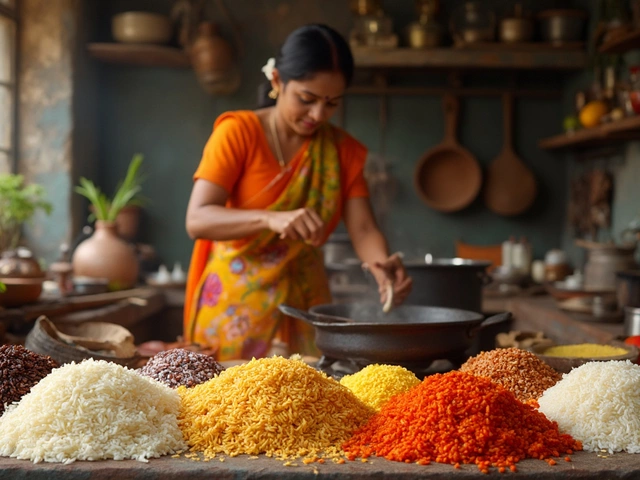High Yield Vegetables: Simple Ways to Boost Your Harvest in India
If you want a garden that fills your kitchen, the key is choosing the right vegetables and giving them the right care. In India’s varied climate, you can grow plenty of high‑yield crops without fancy equipment. Below are practical steps that any gardener can follow, whether you have a backyard plot or a few pots on a balcony.
Pick the Right Crops for Your Region
Start with vegetables that naturally produce a lot in your zone. In the north, varieties like broccoli, cauliflower, and leafy greens such as spinach thrive during cooler months. In the south, quick‑growing beans, okra, and bitter gourd give great yields when the temperature stays warm. Look for local seed catalogs that label "high yield" or "early" – those tags usually mean the plant packs more fruit per plant.
One proven example is broccoli farming in India. Farmers who use disease‑resistant hybrids and space plants 45 cm apart often double their output. The same principle works for many veggies: give each plant enough room and the soil will reward you with more heads.
Soil Prep: The Foundation of a Big Harvest
Good soil is the easiest way to increase yield. Before planting, work organic matter like compost or well‑rotted farmyard manure into the top 20 cm. This improves texture, holds moisture, and feeds microbes that help roots grow. If your garden soil is heavy and compacted, add coarse sand or more compost to loosen it – simple add‑ons that let roots breathe.
Testing pH isn’t rocket science; a cheap kit from a garden store will tell you if the soil is too acidic or alkaline. Most vegetables prefer a pH of 6.0‑6.8. Adjust with lime for acidity or gypsum for alkalinity, and you’ll see healthier foliage and more fruit.
Water Smart, Not Hard
Consistent moisture beats occasional deep watering. Drip irrigation lines, buried just a few centimeters underground, deliver water right to the root zone and reduce loss. If a drip system feels costly, you can lay a simple garden hose with staggered holes and cover it with mulch to mimic the effect.
Remember, many Indian gardeners over‑water in monsoon months and then under‑water during dry spells. Keep a moisture meter or press your finger 2 cm into the soil; if it feels dry, water now. This routine stops root stress and helps vegetables fill out their size potential.
Fertilize at the Right Time
Vegetables need nutrients at different stages. Stick a balanced NPK 10‑10‑10 fertilizer at planting, then switch to a higher‑potash mix (5‑10‑15) when fruits start forming. A quick side‑note: excessive nitrogen makes leaves big but stalls fruit – a common mistake that shrinks yield.
Organic options work too. A tea made from fish emulsion or a handful of neem cake every few weeks gives a slow release of nutrients without burning roots.
Control Pests Before They Take Over
Late‑season pests like aphids and fruit flies love a dense garden. Instead of chemicals, try companion planting – grow marigold or basil near tomatoes to repel pests. Neem oil sprays every two weeks keep insects at bay and are safe for edible plants.
If you spot a problem early, hand‑pick pests or use sticky traps. Small actions now prevent a massive loss later and keep your yield numbers up.
Harvest at the Right Moment
Picking vegetables at their peak not only tastes better but also encourages the plant to produce more. For beans, snap them when they’re about 5‑7 cm long. For leafy greens, cut the outer leaves first and let the center keep growing.
Regular harvesting signals the plant to keep producing, turning a single plant into a mini‑factory of vegetables.
With these straightforward steps – choose the right crops, prep the soil, water wisely, feed on schedule, and stay on top of pests – you’ll see a noticeable jump in the amount of food your garden puts out. High yield doesn’t require a large field, just a little knowledge and consistency. Happy planting!

Which Vegetable Farming is Profitable in India? Your Practical Guide
Wondering which vegetable farming pays off in India? This article breaks down the most profitable vegetables, explains what makes them a smart choice, and shares tips from real farmers who’ve seen success. You’ll discover market trends, risks, and quick tricks to boost earnings. Whether you have one acre or ten, you’ll find ideas here to help you start, scale, or rethink your farming strategy. Get ready to turn your kitchen garden—or big farm—into a cash crop powerhouse.
About
Vegetable Gardening
Latest Posts


Natural Aromas That Repel Bugs: What Scents Keep Pests Away?
By Alden Thorne Jan 31, 2025

Why White Rice Might Spike Your Cholesterol Levels
By Alden Thorne Feb 16, 2025

Best Additions to Loosen Up Garden Soil
By Alden Thorne Feb 24, 2025
